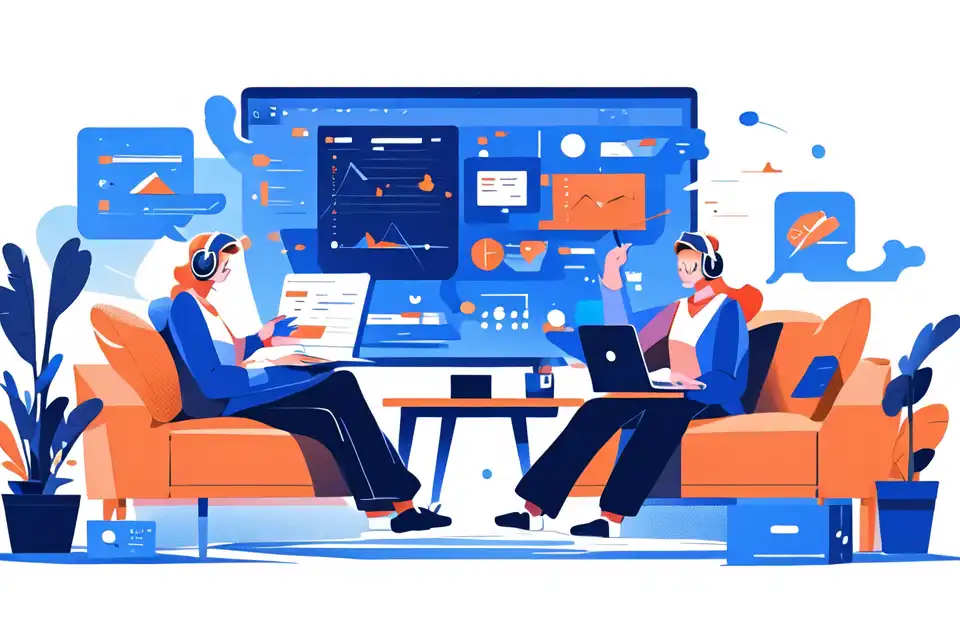3D Modeling
Unlock the potential of 3D modeling with the comprehensive Lark glossary guide. Explore essential terms and concepts to excel in the gaming realm with Lark solutions.
Try Lark for Free
Leverage the full capabilities of Lark Base to streamline, oversee, and successfully execute your real estate strategies and initiatives.
Define 3d modeling and its relevance in the gaming industry
3D modeling refers to the process of creating three-dimensional representations of objects or characters using specialized software. In the gaming industry, 3D modeling plays a crucial role in bringing virtual worlds to life. It allows game developers to create realistic environments, detailed characters, and immersive gameplay experiences.
The relevance of 3D modeling in the gaming industry cannot be overstated. For gamers, it enhances the visual appeal and realism of games, making them more engaging and enjoyable. The level of detail that can be achieved through 3D modeling adds depth and complexity to game worlds, creating a more immersive experience for players.
From the perspective of the gaming industry, 3D modeling is essential for creating high-quality games that can compete in a competitive market. It allows developers to showcase their creativity and artistic vision, making their games stand out among the crowd. Additionally, 3D modeling enables game designers to accurately represent their ideas and concepts, translating them into visually stunning virtual worlds.
Significance of 3d modeling in gaming
Understanding 3D modeling is crucial for both gamers and individuals operating gaming businesses. For gamers, having a basic understanding of 3D modeling can enhance their appreciation of the technical aspects of game development. It allows them to recognize the skill and effort that goes into creating the virtual worlds they explore.
For individuals operating gaming businesses, 3D modeling is a fundamental skill that can directly impact the success of their ventures. Whether it's developing an indie game or working in a larger game development studio, a strong grasp of 3D modeling can lead to more visually appealing games and a competitive edge in the market.
Who benefits from 3d modeling in gaming?
Various stakeholders in the gaming ecosystem benefit from 3D modeling:
-
Game Developers: 3D modeling provides game developers with the tools and techniques to bring their creative visions to life. It allows them to design and build detailed environments, characters, and objects that enhance the overall gameplay experience.
-
Game Designers: 3D modeling enables game designers to visualize their ideas and concepts in a tangible form. It allows them to communicate their vision to the development team and make informed decisions about the game's aesthetics and mechanics.
-
Gamers: 3D modeling enhances the immersion and realism of games, providing gamers with visually stunning and engaging experiences. It allows them to explore intricate virtual worlds and interact with lifelike characters and objects.
-
Game Artists: 3D modeling is a crucial skill for game artists, as it enables them to create visually appealing assets for games. It allows them to sculpt detailed characters, design intricate environments, and add visual effects that enhance the overall visual quality of the game.
Related:
Overcast Games Software Development Service Chooses Lark to Power Effective Team CollaborationLearn more about Lark x Gaming Industry
How 3d modeling works for gaming businesses
Practical Implications and Why It Matters
Implementing 3D modeling effectively in gaming businesses has several practical implications. It allows businesses to:
-
Create visually stunning games: 3D modeling enables gaming businesses to create visually stunning games that captivate players and stand out in a competitive market.
-
Enhance gameplay experiences: By using 3D modeling techniques, gaming businesses can create immersive and realistic gameplay experiences that keep players engaged and entertained.
-
Improve efficiency in game development: 3D modeling tools and workflows can streamline the game development process, making it more efficient and allowing for faster iteration and prototyping.
-
Collaborate effectively: 3D modeling facilitates effective collaboration among different teams involved in game development, such as artists, designers, and programmers. It allows for better communication and understanding of the game's visual elements.
Best Practices when Considering 3D Modeling in Gaming and Why It Matters
When implementing 3D modeling in gaming, it is essential to follow best practices to ensure optimal results. Some best practices include:
-
Planning and concept development: Before diving into 3D modeling, it is crucial to have a clear plan and concept for the game. This helps guide the modeling process and ensures that the final result aligns with the intended vision.
-
Attention to detail: Paying attention to detail is crucial in 3D modeling, as it can make a significant difference in the overall quality of the game. From intricate textures to realistic lighting, focusing on the details enhances the visual appeal of the game.
-
Optimization for performance: Optimizing 3D models for performance is essential, especially in resource-intensive games. This involves reducing the polygon count, optimizing textures, and implementing efficient rendering techniques to ensure smooth gameplay on various devices.
-
Regular learning and skill development: 3D modeling is a constantly evolving field, and staying updated with the latest tools and techniques is crucial. Continuous learning and skill development help gaming businesses adapt to changing trends and deliver cutting-edge experiences.
Actionable tips for leveraging 3d modeling in the gaming industry
To leverage 3D modeling effectively in the gaming industry, consider the following tips:
Tip 1: Prioritize Optimization
Optimize your 3D models to ensure optimal performance on different platforms. This includes reducing polygon count, optimizing textures, and implementing efficient rendering techniques.
Tip 2: Embrace Realism and Attention to Detail
Focus on creating realistic and detailed 3D models that enhance the visual appeal of your game. Pay attention to textures, lighting, and other visual elements to create an immersive experience for players.
Tip 3: Collaborate and Communicate Effectively
Collaborate with artists, designers, and programmers to ensure a seamless integration of 3D models into the game. Effective communication and collaboration will help align everyone's vision and create a cohesive experience.
Learn more about Lark x Gaming Industry
Related terms and concepts to 3d modeling in the gaming industry
Related Term or Concept 1: Texturing
Texturing refers to the process of applying 2D images, called textures, to the surfaces of 3D models. Texturing adds detail, color, and realism to the models, enhancing their visual appeal in the game.
Related Term or Concept 2: Rigging
Rigging is the process of creating a digital skeleton for 3D models, allowing them to be animated. It involves defining joints, bones, and controls that enable realistic movement and expression of characters and objects.
Related Term or Concept 3: Rendering
Rendering is the process of generating the final 2D images or animations from 3D models. It involves calculating the lighting, shadows, and other visual effects to create the realistic and visually appealing output seen in games.
Conclusion
In conclusion, 3D modeling is a crucial aspect of gaming that enhances the visual appeal, realism, and overall gameplay experience. Both gamers and individuals operating gaming businesses can benefit from understanding and leveraging 3D modeling effectively. By following best practices, collaborating effectively, and embracing continuous learning, gaming businesses can create visually stunning games that captivate players and succeed in a competitive market.
Related:
Overcast Games Software Development Service Chooses Lark to Power Effective Team CollaborationLearn more about Lark x Gaming Industry
Leverage the full capabilities of Lark Base to streamline, oversee, and successfully execute your real estate strategies and initiatives.








